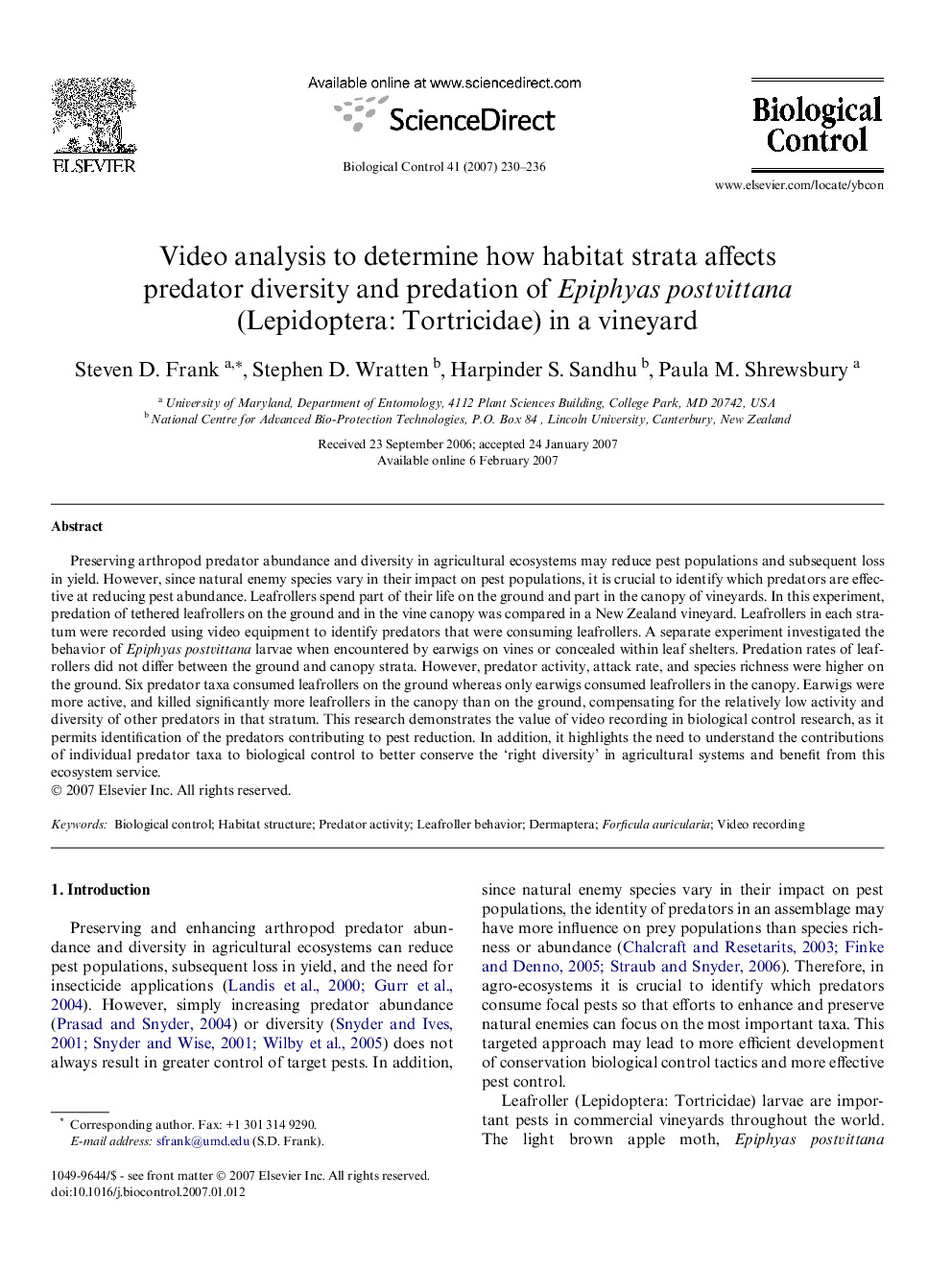| Article ID | Journal | Published Year | Pages | File Type |
|---|---|---|---|---|
| 4505087 | Biological Control | 2007 | 7 Pages |
Preserving arthropod predator abundance and diversity in agricultural ecosystems may reduce pest populations and subsequent loss in yield. However, since natural enemy species vary in their impact on pest populations, it is crucial to identify which predators are effective at reducing pest abundance. Leafrollers spend part of their life on the ground and part in the canopy of vineyards. In this experiment, predation of tethered leafrollers on the ground and in the vine canopy was compared in a New Zealand vineyard. Leafrollers in each stratum were recorded using video equipment to identify predators that were consuming leafrollers. A separate experiment investigated the behavior of Epiphyas postvittana larvae when encountered by earwigs on vines or concealed within leaf shelters. Predation rates of leafrollers did not differ between the ground and canopy strata. However, predator activity, attack rate, and species richness were higher on the ground. Six predator taxa consumed leafrollers on the ground whereas only earwigs consumed leafrollers in the canopy. Earwigs were more active, and killed significantly more leafrollers in the canopy than on the ground, compensating for the relatively low activity and diversity of other predators in that stratum. This research demonstrates the value of video recording in biological control research, as it permits identification of the predators contributing to pest reduction. In addition, it highlights the need to understand the contributions of individual predator taxa to biological control to better conserve the ‘right diversity’ in agricultural systems and benefit from this ecosystem service.
